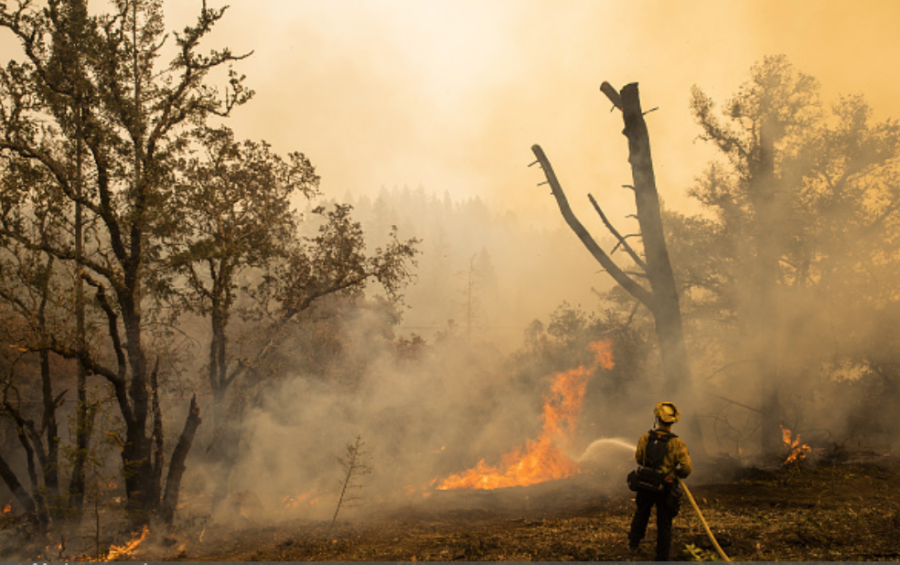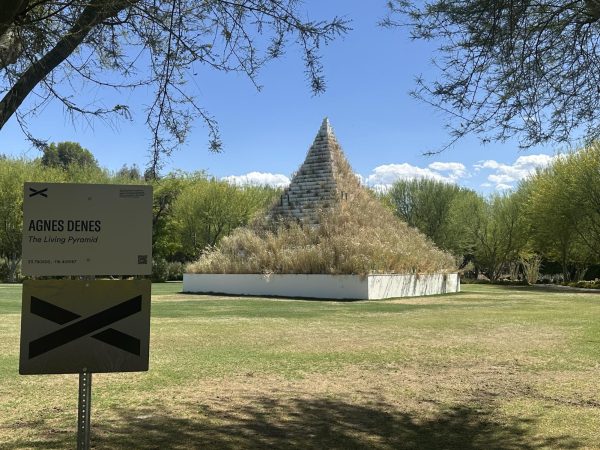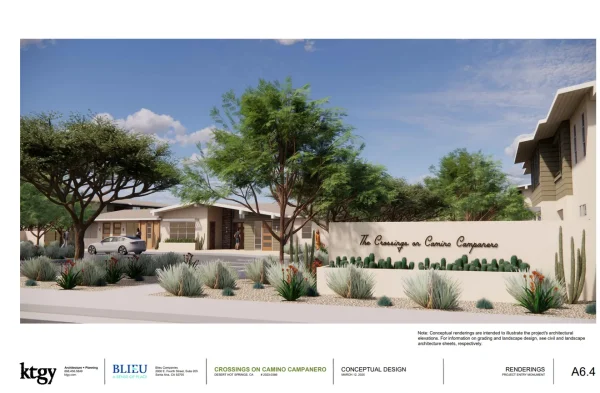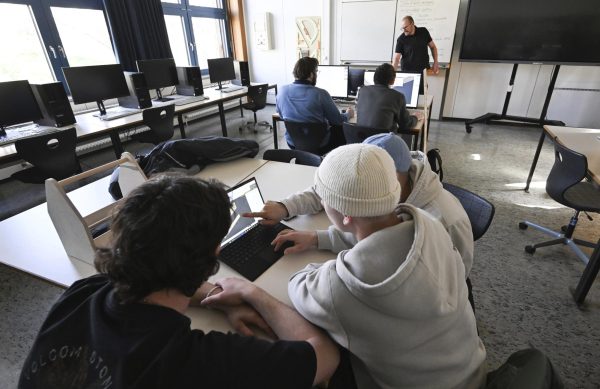Wildfires continue to burn throughout California
California has suffered a vast number of wildfires this past year. Citizens are concerned with what will happen if these hazardous fires continue occurring. Fire season looks the worst during this time, and many believe climate change has caused temperatures to get hotter than usual.
Climate change has been a significant factor in increasing the risk and expansion of wildfires on the United States’ West Coas, according to scientistst. Wildfire risk depends on temperature, soil moisture, trees, shrubs and other potential fuel. According to The Center For Climate And Energy Solutions, climate change solution causes forest fuels to be drier in the Western United States. These natural disasters are even threatening to burn rural and suburban communities all over the state, covering them in foggy fumes.
On Oct. 28, more than 3 million acres had burned across California in 2020. These disasters occurred due to the more than 8,000 incidents that were registered. Many residents have been affected by this, leaving more than 7,000 structures damaged or destroyed. This record, unfortunately, exceeds 2018, according to the Department of Forestry and Fire Protection.
Some of the incidents that occurred this year took place closer to our community, then we thought. The most recent fire is the Copper fire located in Amador, leaving 48 burned acres. The nearest to our valley is Candy Fire occurring in Riverside. It left 227 burned acres and 100% containment.
The nine facilities in charge of looking after injured citizens have confirmed the loss of life. These facilities with the Cal Fire department are currently working on informing citizens about fire prevention grant programs.
According to the Department of Forestry and Fire Protection, the (CCI) Fire Prevention Department Grant program, Cal Fire aims to reduce the risk of wild-land fires to habitable structures and communities, while maximizing carbon sequestrations in healthy wild-land habitat and minimizing the uncontrolled release of emissions emitted by wildfires.
The three qualifying projects and activities include hazardous fuel reduction and removal of dead, dying, or diseased trees, fire prevention planning, and fire prevention education. Part of the Fire Prevention Education includes workshops, meetings, materials creation, and other educational activities to increase knowledge and awareness information that could be used to reduce the total number of wild-land fire and acres burned.
The Fire Prevention Planning included wildfire risk or related mapping, and creations or updates to wildfire mitigation plans. These are all benefits and grants that the state is working on to lower the number of wildfires.
Our valley is also working at its best to get prepared for what these high temperatures and strong winds can cause. In the Eastern Coachella Valley, some nonprofit organizations like Pueblo Unido have been informing our community members about these situations.
Pueblo Unido’s Director of Capacity Building, Yaneth Andrade, said, “we receive funding to help hard-to-reach communities prepare for disasters such as wildfires. We also partner with Riverside County to help outreach and register community members for training that will allow them to help their neighbors in case of a fire.”
This is very important since the Eastern Coachella Valley residents can be at high risk due to illegal dumping, extremely hot summer, and the dry vegetation that occurs in that community.
North Shore resident Yadira Elizarraras felt concerned with the situation and said, “when I saw what was going on, I felt worried! We have many illegal dumping and dry vegetation that could cause fire and put our community in danger. I wouldn’t want to experience the same things the residents from Orange County are going through. I am really glad we are receiving help so that we can get educated and prepared for any future and possible fires.” The Coachella Valley, like other counties, is doing their job to make sure residents are safe and informed about what is going on near them.
The wildfires in California have affected many residents in the ways. Climate change is causing many wildfires to spread across the state. Organizations and communities across the state have been working together to prevent these wildfires from causing any more damage.
These grants offered to the residents will allow them to educate and prepare our communities for future wildfires. Urban and Suburban communities are at risk due to the three main factors; their residents must continue receiving help. The Cal Fire department, as of today, indicates that there is still a red flag warning on Saturday. The North and South Baytemperatures are high and persist, adding to the critical fire weather danger. We are hoping these wildfires end soon.
For more information, visit the Cal Fire Department at www.fire.ca.gov.







